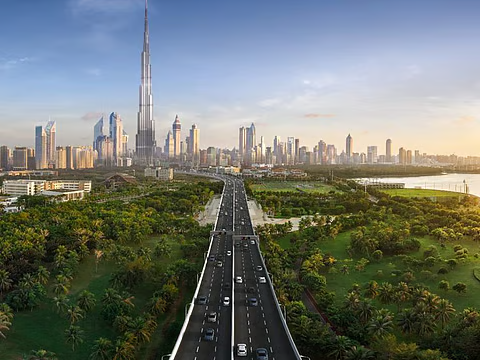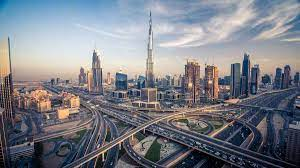
Dubai, known for its futuristic skyline and desert landscapes, is now setting its sights on a new frontier: mastering the rain. The city has revealed bold plans under the Dubai Urban Master Plan 2040, and one of its key focuses is preparing for unexpected rainfall and climate resilience.
While Dubai is traditionally hot and dry, recent years have shown that sudden storms and flooding can cause massive damage to its modern infrastructure. The 2040 plan is not just about new buildings and roads — it’s about building a weather-smart city.
Let’s dive into how Dubai is preparing for a wetter future and what the 2040 rain strategy could mean for the city and the region.

Dubai typically receives less than 100 mm of rainfall per year. But climate change is shifting weather patterns. In recent years, the city has experienced unusual rainstorms that have overwhelmed drainage systems, flooded roads, and damaged homes and businesses.
For example, in April 2024, parts of Dubai were hit with the heaviest rain in 75 years, causing widespread disruption. Schools were closed, flights were delayed, and residents were stranded on waterlogged highways. The storm revealed how even a few hours of rain could bring one of the world’s most modern cities to a halt.
The Dubai 2040 Urban Master Plan, launched by Sheikh Mohammed bin Rashid Al Maktoum in 2021, is a long-term vision for sustainable urban growth. It covers everything from housing and transport to green spaces and economic zones.
But now, after the April 2024 floods, weather preparedness has become a priority.
The updated plan includes:
Dubai’s 2040 rain plan aims to transform weather risks into manageable events. Some of the features include:
Traditional drains can’t handle sudden cloudbursts. Dubai is now installing sensor-based drainage that adapts in real time. These systems will use AI and IoT to monitor water flow, redirect it, and prevent road flooding.
During rare rainstorms, much of the water goes to waste. The city plans to build giant underground tanks that will store rainwater. This water can later be treated and used for agriculture, landscaping, and firefighting.
To reduce runoff, new buildings may feature green roofs and permeable pavements. These allow rainwater to soak into the ground rather than flood the roads.
Weather is hard to predict, but Dubai wants to use artificial intelligence and satellite imagery to forecast rain with higher accuracy. This could allow emergency services and city planners to act hours in advance.
As part of the 2040 vision, Dubai also wants to create urban water features like lakes and canals that act as natural flood buffers. These blue corridors will make the city more beautiful and more climate-resilient.
Dubai is already famous for cloud seeding — a process where planes release chemicals into clouds to make them rain. But this has raised questions. Is the artificial rain part of the problem?
Experts say that while cloud seeding increases rainfall slightly, the real issue is infrastructure. The 2040 plan focuses more on managing the rain rather than making it happen.
Still, cloud seeding will continue to be part of Dubai’s weather strategy, especially as water security becomes a concern.
By investing in rain infrastructure, Dubai is not just avoiding future floods — it’s also creating new opportunities:
Environmentally, the city could reduce heat, improve air quality, and promote biodiversity by adding water features and greenery.
Dubai’s ambitions are impressive, but challenges remain:
Experts also warn that over-dependence on tech solutions might overlook community-based natural solutions like wetlands, trees, and open spaces.

For the people of Dubai, the 2040 rain plan could mean:
Residents are encouraged to participate by reporting blocked drains, planting water-absorbing greenery, and staying informed through smart apps.
Dubai’s 2040 plan for rain is not just about avoiding disaster. It’s about leading the world in climate-ready city design. As extreme weather events become more common, cities worldwide will look to Dubai to learn how to prepare.
With its mix of technology, green planning, and bold vision, Dubai may once again set a global example — this time, not just for skyscrapers, but for sustainability.
Read More:- Portugal’s Dama Art Gallery Takes Global Lead in Art Movement Now 2025
